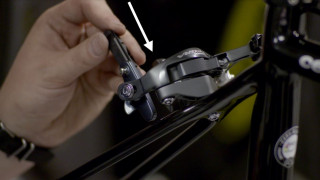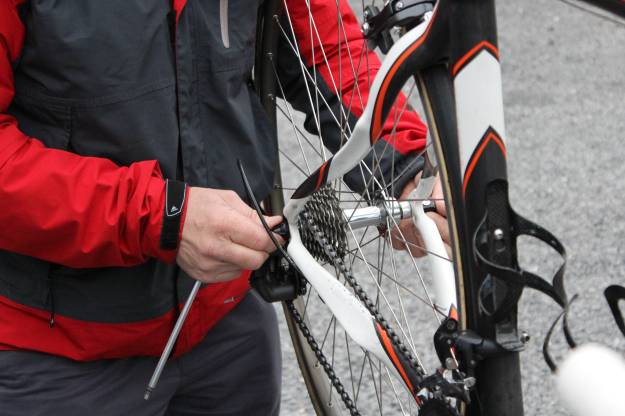Checking and, if necessary replacing your brake pads, is an essential part of bike maintenance. If you fail to do this, you risk brake failure, expensive damage to your rim or potentially having an accident. Follow this advice from Great Britain Cycling Team mechanic Marc Yates.
How do I know when to replace my pads?
Brake pads will have wear indicators, usually circles or lines. If these have disappeared from the pads wearing down, it’s time to replace them.
Is it hard and how long will it take to do?
It’s a fairly simple job and should only take 5-10 minutes.
What tools do I need?
You’ll need 2.5 and 4 mm Allen keys and also maybe a pair of pliers.
How do I do it?
- First, unscrew the brake cable barrel adjuster to loosen the brake off, open the calipers using the lever and remove the wheel.
- Using the 2.5 mm Allen key, unscrew the grub screw that stops the pad from sliding out. You don’t need to completely remove it, just enough to release the pad. If it’s a bit stiff, use the pliers to encourage it out.
- Take the new pad and check the directional arrow and the right/left indicator on it. Once you’re sure you’ve got the correct pad, slide it in.
- Tighten up the grub screw and then repeat this process on the other side.
- Replace the wheel, close the caliper and then use the barrel adjuster to set the pad position relative to the rim. Double check that when the brakes are on, the pads don’t rub on the tyre. You can adjust their position using your 4 mm Allen key.
What about different rims?
It’s essential that you select the correct pad for your rims. Alloy, carbon and ceramic rims all require specific pads and using the wrong ones can invalidate your wheel warranty, damage your rim and cause unreliable braking performance. There are some pads that are suitable for both carbon and alloy rims but you should be very careful about just swapping wheels back and forth. When used with alloy rims the pads often become embedded with shards of metal which can easily damage a carbon rim. Different rim and pad combinations will wear at different rates, so make sure you check those wear indicators regularly.
Any other tips?
Make sure, as part of your regular bike wash, that you degrease and clean your pads and rims. This will significantly increase the lifetime of both components and improve braking performance.


















